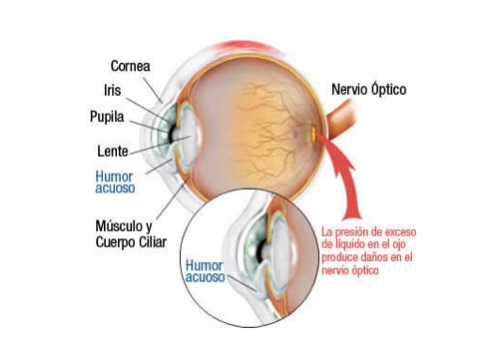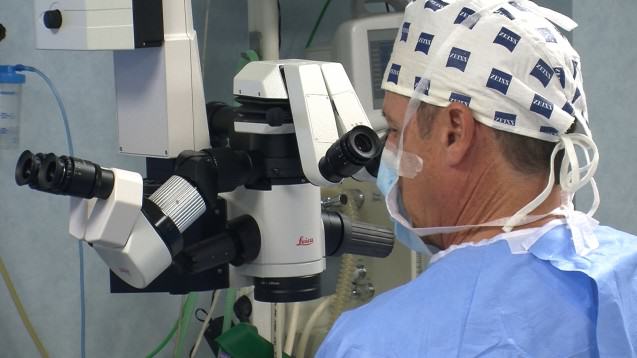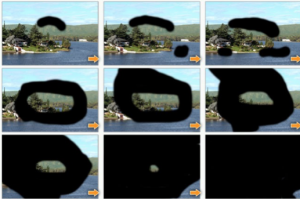Glaucoma
El Instituto Oftalmológico Amigó estamos especializados en la patología del glaucoma. En nuestro centro podrá encontrar un equipo médico especializado y con dilatada experiencia, los equipos más sofisticados para el diagnóstico y los métodos quirúrgicos más avanzados para su tratamiento.
¿Es frecuente el glaucoma?
El glaucoma es un grupo de enfermedades del ojo caracterizado por niveles de presión intraocular que dañan progresivamente el nervio óptico y sus fibras, los cuales forman parte de la retina en el fondo del ojo. El glaucoma, por algunos denominado “el ladrón silencioso de la visión”, no provoca síntomas por lo general hasta que la enfermedad está avanzada.
Dejado sin tratamiento, el glaucoma daña progresivamente la visión y puede llevar a la ceguera, siendo el glaucoma la principal causa de ceguera en España. Aunque esta enfermedad no puede “curarse”, sí que puede ser controlada y su empeoramiento detenido conservando así la visión. Por tanto, la clave para proteger su visión es la detección temprana y el correcto tratamiento.
‘’Con exámenes oftalmológicos periódicos, la detección temprana y un adecuado tratamiento, es posible detener la enfermedad y conservar la visión’’
¿ES FRECUENTE EL GLAUCOMA?
Dos de cada 100 personas de más de 40 años de edad padecen de glaucoma en España. Esta enfermedad es la causa del 12 % de los ciegos en el mundo occidental.

¿QUÉ ES LA PRESIÓN OCULAR?
El humor acuoso es un líquido transparente que rellena la parte anterior del ojo. El acuoso se produce continuamente por el cuerpo ciliar oculto tras el iris. Por ello debe salir igualmente del ojo de forma continua y lo hace a través de un tejido con agujeros microscópicos llamado malla trabecular. La cantidad de humor acuoso en el interior del ojo es la responsable de la presión intraocular.
El concepto básico del glaucoma es que si esta presión ocular está demasiado elevada, puede dañar al nervio óptico (nervio que conduce la visión desde el ojo hasta el cerebro) lo que, de no tratarse, puede resultar en pérdida progresiva del campo visual y finalmente en ceguera.





¿CUÁL ES LA PRESIÓN OCULAR NORMAL?
Normalmente se entiende como presión intraocular normal aquella situada entre 12 y 21 mm. Hg. Sin embargo, en algunas personas, una presión ocular “normal” puede ser excesiva para su ojo y dañar al nervio óptico, una condición que se denomina glaucoma de tensión normal y que en nuestro Instituto diagnosticamos con más frecuencia de lo que se pensaba.
Por el contrario, en otras personas, una presión ocular elevada o mayor de 21 mm. Hg. no llega a producir daño en el nervio óptico no existiendo por tanto glaucoma. Por tanto, lo esencial en el glaucoma es el daño progresivo del nervio óptico que suele acompañarse, aunque no siempre, de tensión ocular elevada.







¿INFLUYE LA PRESIÓN ARTERIAL EN LA PRESIÓN DE LOS OJOS?
El concepto de presión ocular elevada es independiente de la tensión arterial. Por tanto hipertensión ocular (tensión en la vista) e hipertensión arterial (tensión medida en el brazo) son enfermedades diferentes.





¿EXISTEN DIFERENTES TIPOS DE GLAUCOMA?
Sí, hay varios tipos de glaucoma. Los dos tipos principales son: el llamado glaucoma crónico de ángulo abierto (GCAA) que es el más frecuente, y el glaucoma de ángulo cerrado o ángulo estrecho.





¿QUIÉNES ESTÁN EN MAYOR RIESGO DE PADECER GLAUCOMA?
El glaucoma NO está relacionado con hábitos de trabajo, dietas, estrés o “nervios”. Existen verdaderos factores de riesgo de padecer glaucoma que debe tener en cuenta:
La edad: el riesgo de padecer la enfermedad es mayor según aumenta la edad. El glaucoma es muy raro que se presente en menores de 40 años de edad y típicamente lo diagnosticamos a partir de los 50-60 años de edad. Por ello sus ojos deben ser controlados como mínimo:
> Una vez a la edad de 35 y otra a los 40 años.
> A partir de los 40 años, cada 2 a 4 años.
> Después de los 60 años, cada 1 a 2 años.
> Aquellos con cualquier factor de riesgo aumentado de glaucoma deben ser examinados cada 1 a 2 años a partir de los 35 años.





Factores de riesgo
Poseer familiares que padecen la enfermedad:los familiares próximos (hermanos, padres, hijos) de enfermos diagnosticados de glaucoma crónico de ángulo abierto tienen seis veces más probabilidades de padecer glaucoma que aquellos cuyos familiares no lo padecen.
Presión ocular elevada: las personas con una presión ocular mayor de 21 mm. Hg. tienen mayor predisposición a padecer glaucoma, aunque esto no significa que lo vayan a desarrollar.
Algunos medicamentos: El uso prolongado de cortisona y sus derivados (potente antiinflamatorio que se encuentra en muchas medicinas al uso) aumenta el riesgo de padecer glaucoma. Desgraciadamente los vemos con frecuencia utilizados de forma injustificada para el tratamiento de irritaciones o inflamaciones oculares banales. Es muy importante que evite automedicarse y que rechace todo colirio que contenga cortisona o sus derivados (dexametasona, betametasona, prednisona, fluorometolona, etc…) y no le haya sido prescrito por el oftalmólogo.





TRATAMIENTO DEL GLAUCOMA
En el Instituto Oftalmológico Amigó llevamos tratando el glaucoma desde el año 1990. Tenemos un fuerte compromiso con su diagnóstico, control y tratamiento. Esto se ha traducido en numerosos cursos de formación, asistencia a cursos de actualización y la incorporación de la más sofisticada tecnología que nos permite tratar esta enfermedad con las mejores garantías.
“El glaucoma no se cura, se detiene. Es muy importante el diagnóstico precoz y poder detectarlo en los primeros estadios de la enfermedad”.





El objetivo del tratamiento del glaucoma es evitar que se produzca un daño irreversible en la visión, y de manera general está basado en la disminución de la presión intraocular. Aunque la presión ocular es sólo una de las causas del glaucoma, reducir esta presión es el tratamiento más usado. Los tratamientos utilizados son de cuatro tipos: medicamentos, láser, cirugía o una combinación de los anteriores.
Los medicamentos para el glaucoma se administran principalmente en forma de colirio o gotas oculares. Existen diferentes tipos de colirios y no existe una solución única para todos los pacientes. En función de las características de cada caso el tratamiento será distinto, por lo que es necesario probar diferentes tipos de gotas hasta alcanzar el control de la presión ocular.
El tratamiento del glaucoma con láser, bien en forma de trabeculoplastia selectiva (SLT) para el glaucoma de ángulo abierto o de iridotomía periférica para el glaucoma de ángulo cerrado, son tratamientos láser que pueden ser utilizados como tratamiento inicial en lugar de los colirios o como tratamiento adicional cuando las gotas no reducen adecuadamente la presión ocular, alcanzando muy buenos resultados. Dada su eficacia demostrada, en el IOA empleamos cada vez más el láser en el manejo de pacientes con glaucoma.





El tratamiento quirurgico se hace necesario en los pacientes en los que el tratamiento con gotas (colirios para el glaucoma) o con laser, no ha conseguido detener la progresión de la enfermedad. Toda operación tiene un riesgo de complicación. No obstante, si la cirugía es ya necesaria, el riesgo de pérdida de visión en caso de no operarse supera con mucho al de las posibles complicaciones de la cirugía del glaucoma. Tras la valoración preoperatoria que realizamos en nuestro Instituto, tendrá una idea más realista de sus posibilidades. En el I.O.A. disponemos de las técnicas quirúrgicas más vanguardistas siendo la esclerectomía profunda no perforante (EPNP) nuestra técnica de elección en la cirugía del glaucoma, técnica que permite la más pronta recuperación visual y los resultados más fiables en una gran mayoría de los casos. Frente al resto de las técnicas al uso, la EPNP no precisa entrar al interior del ojo convirtiéndose así en una técnica conservadora por excelencia. Nuestros doctores le aconsejaran cual es la técnica más adecuada para su caso.
Conoce más aspectos sobre el glaucoma en nuestro blog.


